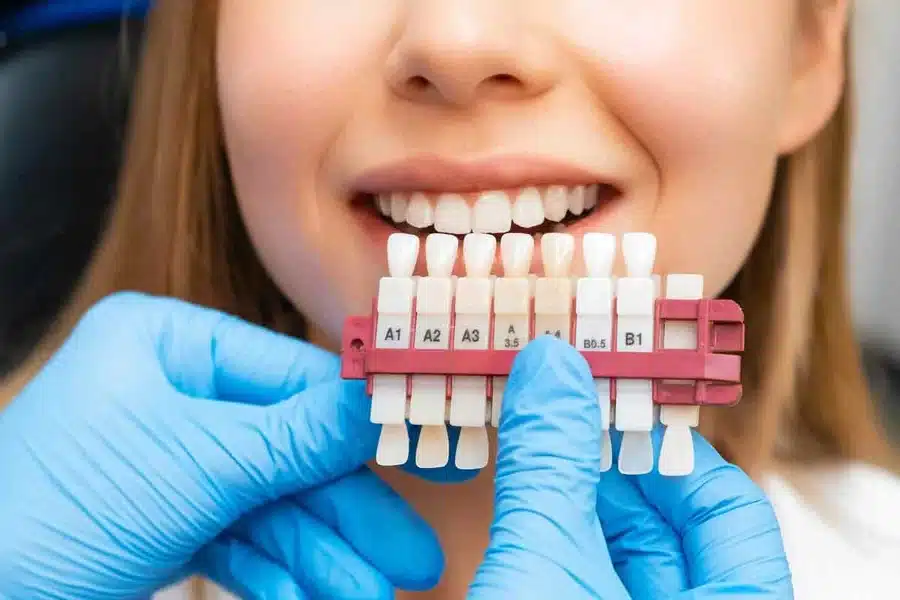A bright, symmetrical smile can boost confidence and make a lasting impression—but achieving that look often comes with a price. Dental veneers have become one of the most popular cosmetic dentistry procedures worldwide, offering a fast and effective solution for discolored, chipped, or misshapen teeth. But before you book your smile makeover, it’s important to understand the cost of dental veneers in 2025, the factors that influence pricing, and how to take care of your investment once it’s done.
What Are Dental Veneers?
Dental veneers are thin shells made from porcelain or composite resin, custom-designed to cover the front surface of your teeth. They improve aesthetics by correcting imperfections in shape, color, and alignment. Veneers are a permanent solution, as they typically require enamel removal to ensure a proper fit. These veneers can address a variety of cosmetic issues, including discoloration, chips, cracks, and uneven spacing. They are typically made from porcelain or composite resin, with porcelain veneers being the more durable and lifelike option. However, one of the primary considerations for patients interested in veneers is the cost of dental veneers, which can vary based on the material, the number of teeth treated, and the expertise of the dentist. While porcelain veneers are generally more expensive, many people feel the long-term benefits justify the investment. Understanding the cost of dental veneers before committing to the procedure is essential, as it ensures you are prepared for both the financial commitment and the care required to maintain your veneers in the years to come.
There are two main types:
- Porcelain veneers: Highly durable, stain-resistant, and natural-looking.
- Composite veneers: More affordable but may not last as long and are more prone to staining.
Average Cost of Dental Veneers in 2025
In 2025, the cost of dental veneers varies widely depending on material, location, dentist experience, and additional treatments required. Here’s a general breakdown:
Porcelain veneers:
- Per tooth*: \$1,200 – \$2,500
- Full smile (8–10 teeth)*: \$9,000 – \$20,000+
Composite veneers:
- Per tooth*: \$400 – \$1,200
- Full smile*: \$3,200 – \$9,600+
These prices are typical for private cosmetic dentistry clinics in countries like the U.S., Australia, the U.K., and Canada. In regions such as Southeast Asia or Eastern Europe, medical tourism can offer lower costs—but it’s crucial to vet the provider thoroughly.
Key Factors Influencing Cost
Several variables can affect how much you’ll pay for veneers:
- Material Type: Porcelain is more expensive due to its longevity and lifelike appearance.
- Dentist Expertise: Highly experienced or celebrity cosmetic dentists often charge premium rates.
- Geographic Location: Urban clinics usually charge more than rural ones. Prices can vary dramatically from one country to another.
- Number of Veneers: Most people get 6 to 10 veneers for a uniform look, but some may only need one or two.
- Preliminary Work: You may need X-rays, teeth whitening, gum contouring, or fillings before veneer placement.
- Lab Fees: High-end dental labs that fabricate custom veneers can increase costs.
Are Veneers Covered by Insurance?
In most cases, dental veneers are classified as a cosmetic procedure, which means they’re not covered by dental insurance. However, if they are deemed medically necessary—say, to repair a damaged tooth after trauma—partial coverage might be possible. Always consult your insurer first.
Financing and Payment Plans
Given the high cost of dental veneers, many dental clinics offer financing options or monthly payment plans. Some providers partner with third-party financing companies, allowing you to spread payments over 6 to 24 months or more. Be sure to ask about:
- Interest rates
- Down payments
- Credit checks
- Hidden fees
A free consultation often includes a financial overview and treatment plan tailored to your budget.
Veneer Longevity: How Long Do They Last?
Porcelain veneers typically last 10–15 years with proper care, while composite veneers may need replacing in 5–7 years. The longevity of your veneers depends not just on the material but also on how well you maintain them. That brings us to the next crucial point— aftercare tips from experts.
Aftercare Tips From Experts
After your veneers are in place, protecting your investment is key. Here are essential aftercare tips from experts:
-
Practice Good Oral Hygiene
Brush at least twice daily and floss once a day. Use a non-abrasive toothpaste to avoid scratching the veneer surface.
-
Avoid Stain-Causing Foods and Drinks
Red wine, coffee, tea, and tobacco can stain composite veneers. Porcelain is more resistant, but it’s still wise to limit exposure.
-
Don’t Use Your Teeth as Tools
Avoid biting your nails, opening bottles, or chewing on ice. Veneers are durable but not indestructible.
-
Wear a Mouthguard
If you grind your teeth at night (bruxism), a nightguard can prevent chipping and prolong the life of your veneers.
-
Schedule Regular Dental Checkups
Twice-a-year visits allow your dentist to monitor your veneers and clean hard-to-reach areas around the edges.
-
Follow Your Dentist’s Maintenance Plan
Some veneers require specific cleaning products or techniques—follow the plan your dentist recommends.
The cost of dental veneers in 2025 is a significant investment in both your appearance and self-confidence. Whether you’re choosing porcelain or composite, it’s crucial to understand all the financial aspects and commit to a strong aftercare routine.
Before booking your procedure, request a comprehensive quote, ask questions about material choices and follow-up care, and ensure your dentist is experienced in cosmetic procedures. Your smile is one of your most powerful assets—make sure you’re getting the best value, quality, and longevity for your money.


